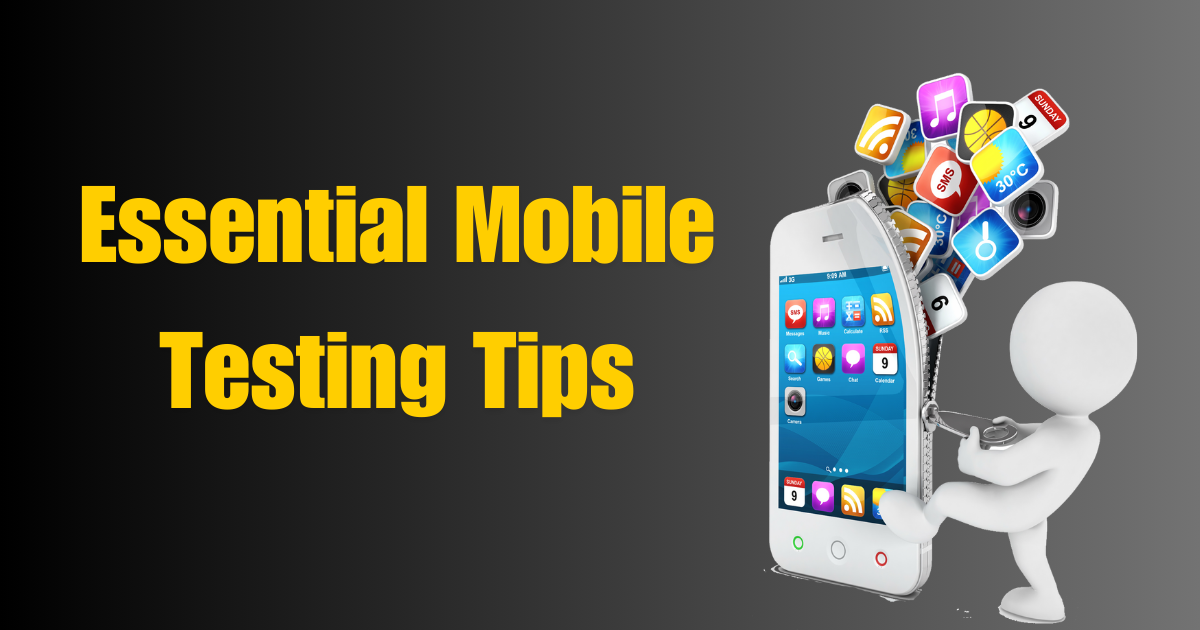Essential Mobile Testing Tips: Maintaining Quality in the Mobile-First Age
 Nikunj Vaishnav
Nikunj Vaishnav
In today’s digital landscape, mobile devices dominate how we interact with the world. As mobile applications become increasingly integral to our daily lives, ensuring their quality through effective mobile testing is paramount. In this blog post, we’ll dive into what mobile testing is, why it’s crucial, and best practices to ensure your app delivers an exceptional user experience.
What is Mobile Testing?
Mobile testing refers to the process of testing mobile applications to ensure they function correctly on various devices and operating systems. It encompasses a variety of testing types, including functional, usability, performance, and security testing. The goal is to identify and fix issues before the app reaches users, enhancing overall quality and satisfaction.
Why is Mobile Testing Important?
Diverse Device Ecosystem: With a plethora of devices, screen sizes, and operating systems, ensuring your app works seamlessly across all of them is essential.
User Expectations: Modern users expect smooth, intuitive experiences. Any hiccup can lead to frustration and ultimately, uninstallations.
Market Competition: With countless apps vying for user attention, a bug-free, high-performing app can set you apart from competitors.
Reputation Management: A single negative review can deter potential users. Rigorous testing helps maintain a positive brand image.
Regulatory Compliance: Depending on your industry, mobile apps may need to comply with specific standards and regulations, which requires thorough testing.
Types of Mobile Testing
1. Functional Testing
- Verifies that the app’s functionalities work as intended. This includes testing features, buttons, and workflows.
2. Usability Testing
- Focuses on the user experience, ensuring the app is easy to navigate and visually appealing. Feedback from real users is invaluable here.
3. Performance Testing
- Assesses the app’s responsiveness, speed, and stability under various conditions, such as high traffic or limited connectivity.
4. Compatibility Testing
- Ensures the app works across different devices, operating systems, and screen sizes.
5. Security Testing
- Identifies vulnerabilities and ensures that sensitive data is protected, especially for apps that handle personal or financial information.
6. Automation Testing
- Uses scripts and tools to automate repetitive testing tasks, making it faster and more efficient. Particularly useful for regression testing.
Best Practices for Mobile Testing
1. Prioritize Early Testing
- Integrate testing into your development lifecycle. Early detection of issues can save time and resources later.
2. Embrace Real Device Testing
- While emulators can be helpful, testing on actual devices provides more accurate insights into performance and user experience.
3. Use Cloud-Based Testing Solutions
- Cloud testing platforms allow you to test your app on a wide range of devices without the need to maintain a physical device lab.
4. Create Comprehensive Test Cases
- Develop detailed test cases covering all functionalities, edge cases, and user scenarios. This ensures thorough testing.
5. Leverage Analytics
- Use analytics tools to gather user feedback and identify areas that need improvement. Continuous monitoring helps maintain quality post-launch.
6. Stay Updated with Industry Trends
- Mobile technology is constantly evolving. Stay informed about the latest trends, tools, and testing methodologies to keep your testing strategy effective.
Conclusion
In a world where mobile apps can make or break a business, effective mobile testing is not just a checkbox on your development list; it’s a critical component of your app’s success. By implementing robust testing strategies, you can ensure that your app meets user expectations and stands out in a competitive market.
Investing in mobile testing will pay dividends in user satisfaction, retention, and ultimately, your brand’s reputation. So, roll up your sleeves, embrace best practices, and get ready to deliver an outstanding mobile experience!
Happy testing!
Connect and Follow:
Like👍 | Share📲 | Comment💭
Subscribe to my newsletter
Read articles from Nikunj Vaishnav directly inside your inbox. Subscribe to the newsletter, and don't miss out.
Written by

Nikunj Vaishnav
Nikunj Vaishnav
👋 Hi there! I'm Nikunj Vaishnav, a passionate QA engineer Cloud, and DevOps. I thrive on exploring new technologies and sharing my journey through code. From designing cloud infrastructures to ensuring software quality, I'm deeply involved in CI/CD pipelines, automated testing, and containerization with Docker. I'm always eager to grow in the ever-evolving fields of Software Testing, Cloud and DevOps. My goal is to simplify complex concepts, offer practical tips on automation and testing, and inspire others in the tech community. Let's connect, learn, and build high-quality software together! 📝 Check out my blog for tutorials and insights on cloud infrastructure, QA best practices, and DevOps. Feel free to reach out – I’m always open to discussions, collaborations, and feedback!